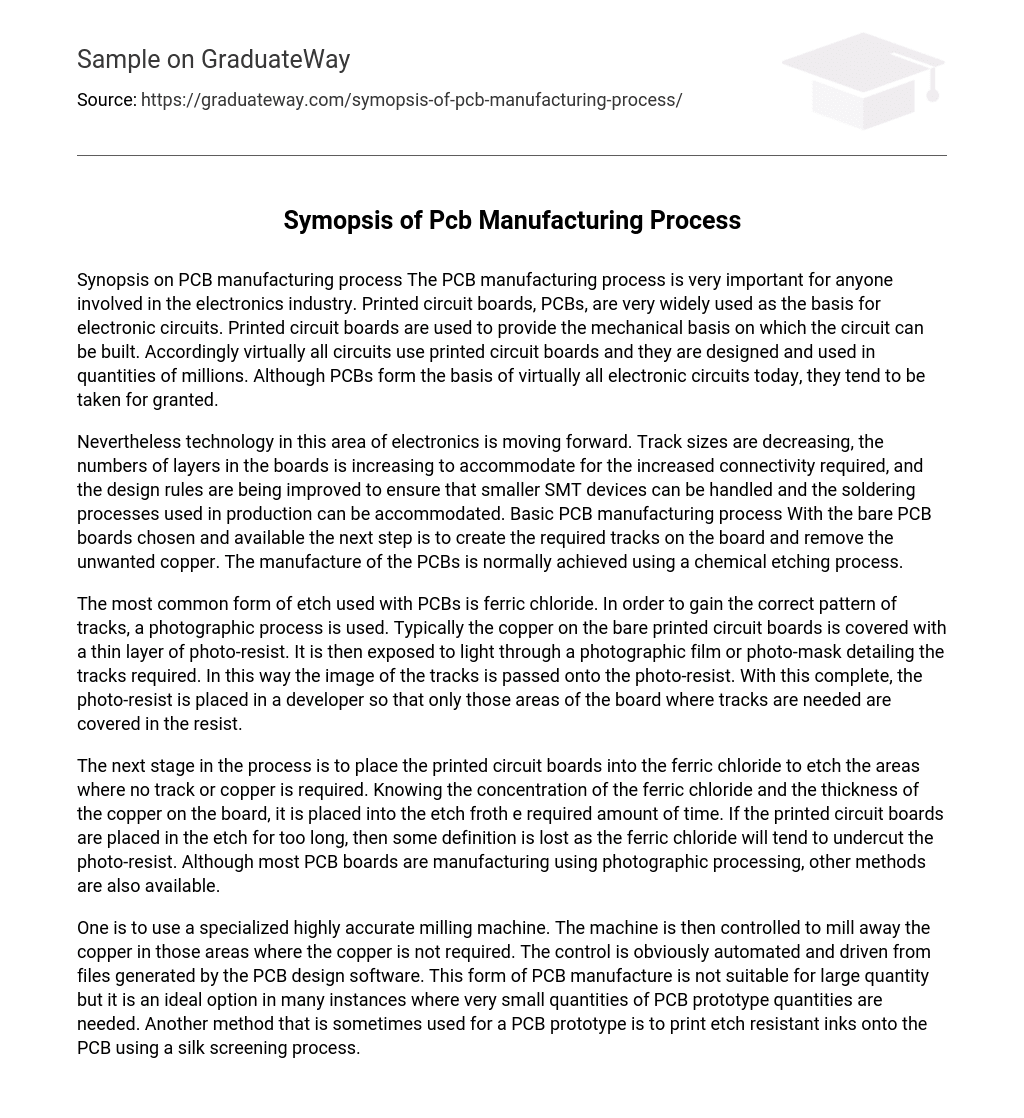Synopsis on PCB manufacturing process The PCB manufacturing process is very important for anyone involved in the electronics industry. Printed circuit boards, PCBs, are very widely used as the basis for electronic circuits. Printed circuit boards are used to provide the mechanical basis on which the circuit can be built. Accordingly virtually all circuits use printed circuit boards and they are designed and used in quantities of millions. Although PCBs form the basis of virtually all electronic circuits today, they tend to be taken for granted.
Nevertheless technology in this area of electronics is moving forward. Track sizes are decreasing, the numbers of layers in the boards is increasing to accommodate for the increased connectivity required, and the design rules are being improved to ensure that smaller SMT devices can be handled and the soldering processes used in production can be accommodated. Basic PCB manufacturing process With the bare PCB boards chosen and available the next step is to create the required tracks on the board and remove the unwanted copper. The manufacture of the PCBs is normally achieved using a chemical etching process.
The most common form of etch used with PCBs is ferric chloride. In order to gain the correct pattern of tracks, a photographic process is used. Typically the copper on the bare printed circuit boards is covered with a thin layer of photo-resist. It is then exposed to light through a photographic film or photo-mask detailing the tracks required. In this way the image of the tracks is passed onto the photo-resist. With this complete, the photo-resist is placed in a developer so that only those areas of the board where tracks are needed are covered in the resist.
The next stage in the process is to place the printed circuit boards into the ferric chloride to etch the areas where no track or copper is required. Knowing the concentration of the ferric chloride and the thickness of the copper on the board, it is placed into the etch froth e required amount of time. If the printed circuit boards are placed in the etch for too long, then some definition is lost as the ferric chloride will tend to undercut the photo-resist. Although most PCB boards are manufacturing using photographic processing, other methods are also available.
One is to use a specialized highly accurate milling machine. The machine is then controlled to mill away the copper in those areas where the copper is not required. The control is obviously automated and driven from files generated by the PCB design software. This form of PCB manufacture is not suitable for large quantity but it is an ideal option in many instances where very small quantities of PCB prototype quantities are needed. Another method that is sometimes used for a PCB prototype is to print etch resistant inks onto the PCB using a silk screening process.





